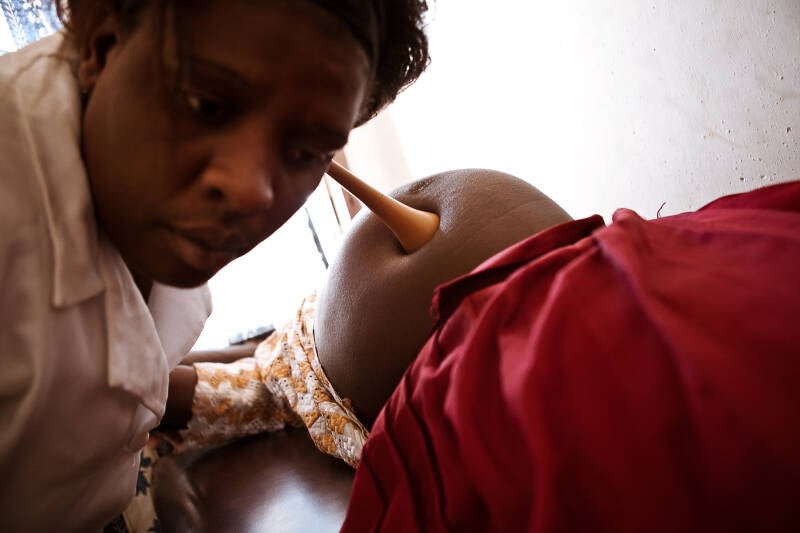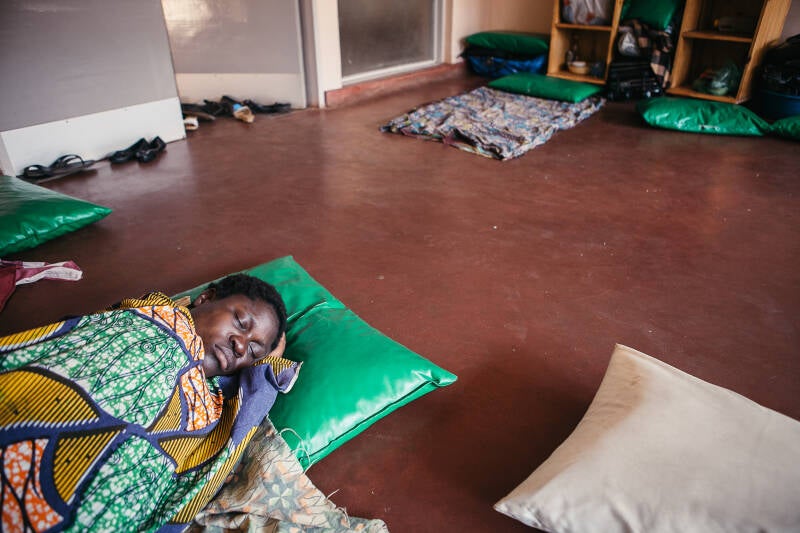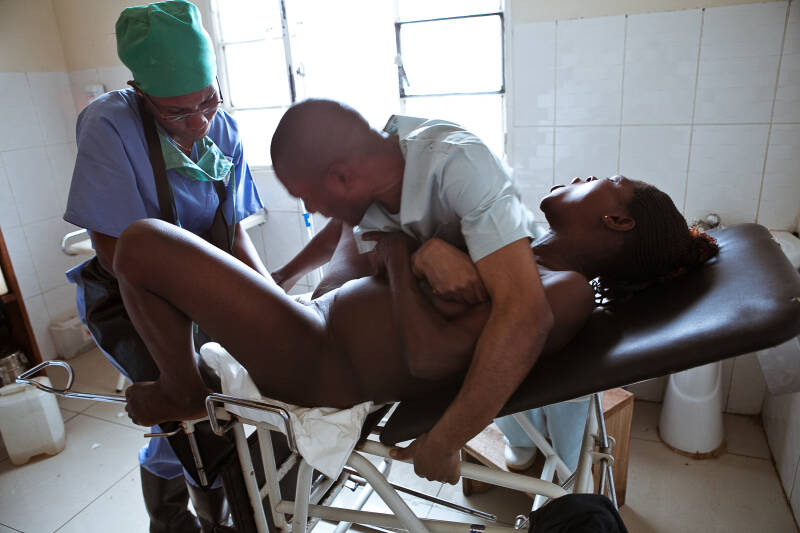Birth is a Dream.
Photographs & Text by Award Winning Photojournalist, Paolo Patruno.

Elisabeth, 34 years old, is pregnant with her 4th child; she is worried as delivering in Africa is a huge risk for women life.
“Each pregnancy is unique. God alone is upon us, only God can help us to deliver.” Kabale, Uganda
Maternal mortality, maternal and new-born health is an untold matter.
Every year, almost 300.000 women die due to complications in pregnancy and childbirth in Sub-Saharan Africa.
"Birth is a dream" I named my documentary project which aims to document and raise awareness about the maternity crisis in Sub-Saharan Africa. I started the project in Malawi, where the words for pregnancy in the local language - “pakati” and “matenda” - translate into “between life and death” and “sick”.
I went to Cameroon, the Democratic Republic of Congo, Ethiopia, Malawi, Mozambique, Uganda and Zimbabwe.
Over the years, I have had opportunities to attend many births: I’ve spent hours, days in maternity wards, talking with women, mothers, midwives, and nurses.
I‘ve documented women giving birth in facilities without adequate equipment and services, or having no access when living in rural areas where they give birth at home without any skilled health workers.
I’ve heard women say, “when we start labouring, we don’t know if we are going to survive or not. It’s only God who can help us for a safe delivery”.
Maternal health is completely different from any other health issue.
Cultural and traditional behaviours have a great influence in the decision-making process when it comes to women. The community may impose home birth in the villages because hospitals are far and women can stay away from home for up to 3 weeks when they often have other children to attend.
Another major factor, yet a paradoxical one, is that women may fear the way they expect to be treated at hospitals. They know not to expect privacy as mothers give birth in overcrowded labour wards. Women may find themselves stark naked attended by male staff, while nurses shout at them for being too loud.
Home birth, on the opposite, provides an intimate atmosphere appealing to young mothers despite the risks involved.
Women are used to live their pregnancy, till the moment of giving birth, alone, without their partners.
Maternity should stand for serenity, joy, happiness, hope.
Unfortunately in Africa it’s not always like that.

Midwife checking foetal heartbeat using a pinard horn during the visit of a pregnant woman. Lilongwe, Malawi.

With fear of not being able to arrive on time, women go to the hospital several weeks in advance of the due delivery date. Only empty rooms are available, with only a few cushions and mattresses to sleep on, often not sufficient for all of them. Because of lack of beds, pregnant women have to sleep on the floor in the antenatal ward, waiting time to deliver. Bwaila Maternity Unit in Lilongwe, Malawi.

Labour ward is just a room where women deliver one next to the other,
without even any folding screen, so they can’t have any privacy. Kabale, Uganda.

Because of lack of medical supplies and equipment in hospital pregnant women have to provide and carry from home plastic sheet to cover the bed of labour ward;
plastic sheet is not sterile at all. Kabale, Uganda.

Small health centres in rural and remote areas have no electricity, so nurses and midwives have to use candles when women deliver during the night. Chankhungu, Malawi.

A woman is suffering receiving injection for local anaesthesia because she needs some sutures after delivering. Bukavu, DRC.

A woman is almost ready to deliver, but she is very tired after many hours of labour;
so a nurse is pushing with all his weight on her belly to help the baby delivering. Bukavu, DRC.

Premature new born twins warmed under the heat of a bulb, because the incubator is not working.
Dejen, Ethiopia.

Woman delivering in theatre with a caesarean. Kabale, Uganda.

A nurse shouting at a pregnant woman for being too loud in her screaming. Kabale, Uganda.

A woman still lying on operating table after a caesarean, when they start to clean the operating room. Kabale, Uganda.

A nurse using a razor blade to remove sutures from belly of a woman who had a caesarean. Kabale, Uganda.

Naked woman delivering surrounded by 8 male medical staff, show lack of respect the woman dignity, as a female patient. Jinka, Ethiopia.

Both mother and her new born resting just few hours after deliver. Kabale, Uganda.

Many expectant mothers choose to give birth away from hospital, with Traditional Birth Attendants or in their homes,
because they live far from hospitals and health centres so they are not able to reach facilities in time to deliver.
And also because sometimes they prefer familiar and more kind treatment they can receive by TBAs.
Kabale, Uganda.

After almost 3 hours in labour the young woman has safely delivered her first child with the support of TBA Alice, delivering, in a poor labour ward at home.
Kabale, Uganda.

Christine, 17 years old, already got married and already lost her first child when she was 16. Now she is 7 months pregnant and
is also taking care of her young sister 3 years old Mayron. Girls in Africa too often miss childhood. Bakumba, Cameroon.

Many girls in the village drop out of school early, having sexual relationships with young boys, and getting pregnant before the age of 18.
The elders of the village say that was not happening at their times, but more of the last decade, due to civilization and modern times. Bakumba, Cameroon.

Palmira died due to pregnancy complications on the way to reach the nearest health centre; she is now buried in the family home.
Madjimisse, Mozambique.
Thanks for viewing this article, please like and share with your friends to support this platform.
To see more documentary work by Paolo, click this link.
To see the full portfolio and how the work has been received see here www.birthisadream.org
His website is http://www.paolopatrunophoto.org/